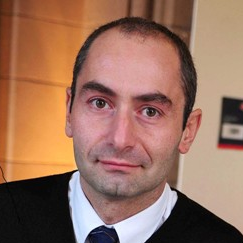The Search for Real Biologically Active Dental Materials of the Future
A special issue of Materials (ISSN 1996-1944). This special issue belongs to the section "Biomaterials".
Deadline for manuscript submissions: closed (10 October 2023) | Viewed by 10457
Special Issue Editors
Interests: dentin; pulp regeneration; remineralization; dental composite; polymer
Interests: dental composite; polymer; surface science; dentin; bioactive
Special Issues, Collections and Topics in MDPI journals
Special Issue Information
Dear Colleagues,
Most dental materials employed nowadays in dentistry are based on synthetic compounds, which are usually not cytotoxic or are inert to cells from the teeth and surrounding tissues. In this regard, bioactive products have been proposed and tailored to replace or contribute to traditional restorative materials and treatments. This represents a threshold for a new trend in dental biomaterials ground on the development of new monomers, bioactive fillers and nanocarriers for drugs and antimicrobial reagents. The objective of this Special Issue is to highlight such new biomaterials and clinical strategies recently developed to truly interact with live oral tissues with high potential to improve dental care. In conclusion, this new trend in dental biomaterials research may represent a seed for the future of a sustainable and more biologically active standard of care in dentistry.
Dr. Victor Pinheiro Feitosa
Prof. Dr. Nikolaos Silikas
Guest Editors
Manuscript Submission Information
Manuscripts should be submitted online at www.mdpi.com by registering and logging in to this website. Once you are registered, click here to go to the submission form. Manuscripts can be submitted until the deadline. All submissions that pass pre-check are peer-reviewed. Accepted papers will be published continuously in the journal (as soon as accepted) and will be listed together on the special issue website. Research articles, review articles as well as short communications are invited. For planned papers, a title and short abstract (about 250 words) can be sent to the Editorial Office for assessment.
Submitted manuscripts should not have been published previously, nor be under consideration for publication elsewhere (except conference proceedings papers). All manuscripts are thoroughly refereed through a single-blind peer-review process. A guide for authors and other relevant information for submission of manuscripts is available on the Instructions for Authors page. Materials is an international peer-reviewed open access semimonthly journal published by MDPI.
Please visit the Instructions for Authors page before submitting a manuscript. The Article Processing Charge (APC) for publication in this open access journal is 2600 CHF (Swiss Francs). Submitted papers should be well formatted and use good English. Authors may use MDPI's English editing service prior to publication or during author revisions.
Keywords
- bioactivity
- dentin
- enamel
- biomaterial
- composite
- nanoparticle
Benefits of Publishing in a Special Issue
- Ease of navigation: Grouping papers by topic helps scholars navigate broad scope journals more efficiently.
- Greater discoverability: Special Issues support the reach and impact of scientific research. Articles in Special Issues are more discoverable and cited more frequently.
- Expansion of research network: Special Issues facilitate connections among authors, fostering scientific collaborations.
- External promotion: Articles in Special Issues are often promoted through the journal's social media, increasing their visibility.
- Reprint: MDPI Books provides the opportunity to republish successful Special Issues in book format, both online and in print.
Further information on MDPI's Special Issue policies can be found here.







